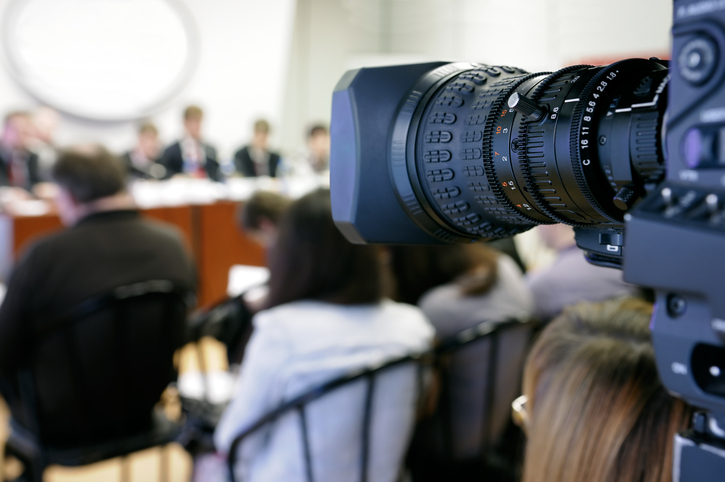In Advance
Your invitation to the press conference should be brief: why it’s taking place, who will speak, where and at what time. There should be contact numbers on the notice. Journalists need to eat too so the offer of good food and drink afterwards cannot go amiss and gives you the opportunity for one-to-one background briefing to reinforce key messages.
On the day, ensure that journalists sign in and give a mobile number so you can talk to them afterwards to reinforce messages; give them a press pack (the press release, key facts about the organization etc) to take away.
The Press Conference
Choose your venue carefully. Ensure there is enough room for everybody (a media crush makes you look bad) and ensure that you and your spokespeople can enter the room from a different door to that of the media. Otherwise you can get trapped in the media scrum and forced into answering more questions when you try to push your way out (which also looks bad on camera).
The spokespeople should not chair the press conference. Maybe use your PR person who knows the journalists’ faces and can avoid inviting questions from known antagonists. Having two or three people on the platform provides variety and is more interesting for the media. You should have a specialist present to answer technical questions.
Make it clear at the beginning how long the press conference will last. If things are going well you can stay longer; if going badly you point to the time limit that was set at the beginning and wrap things up with a polite and firm (we must now get back to work sorting this out).
You must grab the audience in the first 30 seconds. If using slides or other visual aids, make the first one powerful. Tell the audience what they are going to hear, tell them, and then remind them what you’ve said.
The Q&A session is the moment when press conferences can go wrong. Listen attentively, answer engagingly. Do not be afraid of supplementary questions but if it is time to move on, move on. It is your press conference, you are in control. Do not be drawn into areas not being covered by the press conference (“we’re here to talk about ‘x’ not ‘y’”).
The chairman should field all questions direct to the person who is going to answer them. Make sure you ask for the journalist’s name and organisation (it might give you a clue to the type of question they are going to ask and a few precious seconds thinking time). If your colleague looks as though they need more thinking time, string it out by repeating the question back to the journalist. Log all questions for follow up.
Anticipate the negative questions and think in advance of the different angles from which journalists can attack the same issue. In a press conference, each journalist is looking for a unique angle for their own readers/viewers. At the end of the press conference, the chairman should use the final moment to recap on the key messages.
If you want to speak to one of our journalists in order to find out more about the media or want to enquire about booking a training session, please call us on +44 (0)20 7323 2770 or email team@electricairwaves.com.

